How Hans-Günther Lange destroyed our polar stations. Excerpts from the logbook U-711
He has as many as three of them on his account. The Germans diligently created their own in the Arctic, and no less diligently strove to destroy the enemy’s weather stations. In general, this Lange was an interesting type
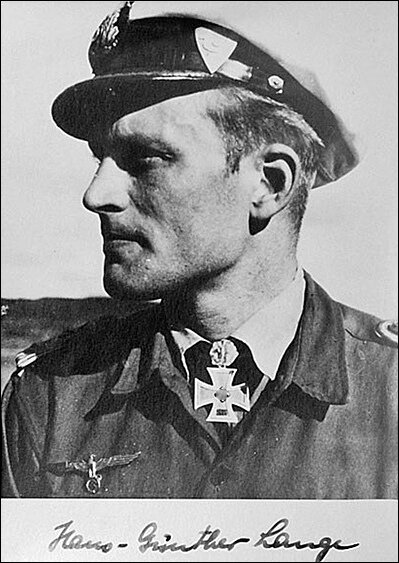
By the time he received the Oak Leaves to his Knight’s Cross, (April 29, 1945), the famous German submarine aces, who earned the Knight’s Cross by sinking several dozen ships and ships, who sank an aircraft carrier or battleship, had already gone to feed the fish, were in captivity, or had been promoted after abandoning their submarines.
And we need heroes! Lange and issued reports about the sunken tonnage. However, only the British corvette HMS Bluebell (K 80), 925 tons of displacement, a Norwegian motor fishing boat (10 tons), and the Soviet auxiliary vessel VPS-5 of 20 tons were damaged, and he did not spare a torpedo on her, but she remained afloat.
He also practiced shooting down Soviet weather stations. Let’s talk about it in more detail.
His boat:
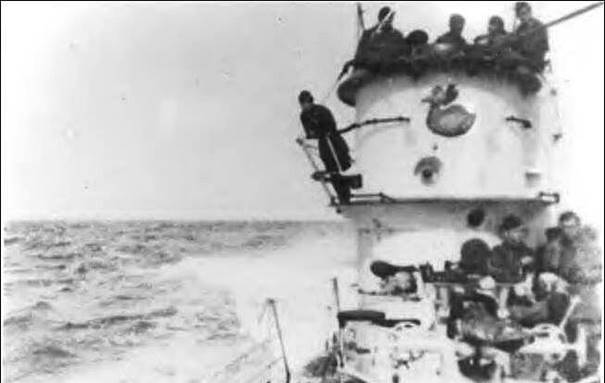
And the brave crew assembled:
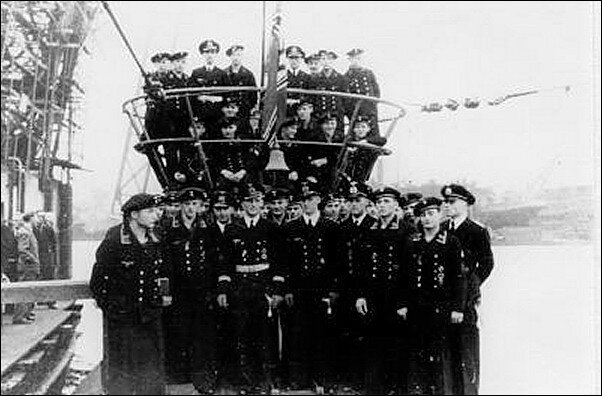
Being a cautious son of a bitch, he was like a wolf, first circling the station, sniffing, and only then proceeding to destroy it.
This is how it was with the polar weather station on Pravda Island. And it’s a long way off, isn’t it?
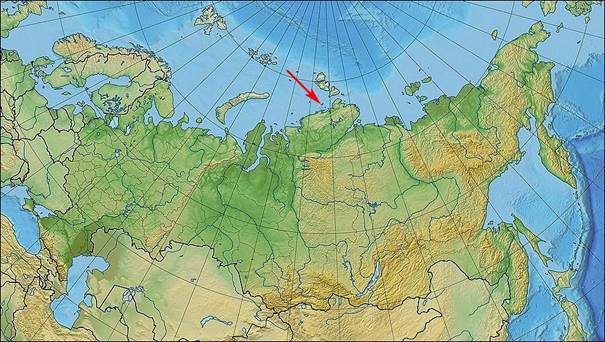
The size of the island is 1.5 by 3 km. More detailed map:
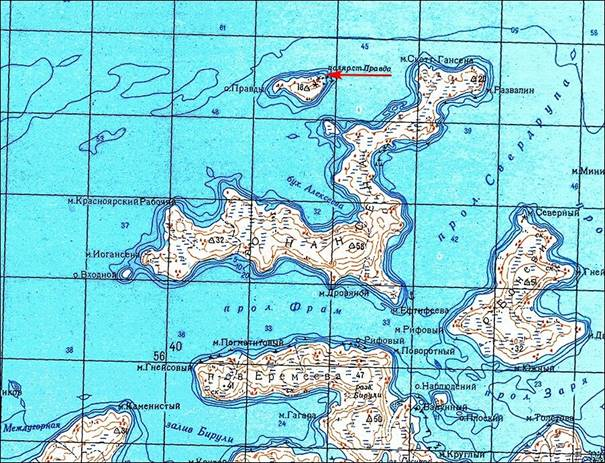
“11.09.43.
09:00. Pravda Island southeast of Herberstein. There is a lighthouse on the island, listed in the Nautical Directory.
09.20 I dived, because 400 meters northeast of the lighthouse I can see a radio station out of the fog. Under the periscope, he approached 300 meters. The radio station is a large wooden house with a tin roof, on the roof there is a radio direction finder. The house has a smaller outbuilding. In addition, there is a small hut ahead.
Next to the house there are two tall slender radio masts. 50 meters east of the house there are 5 navigational signs with triangular and square upper signs. Light flickers through one of the windows on the sea side.
09.45 Turned north.
11.17 surfaced. Solution: Stealth Radio Takeover
Upon receiving an order to return, so as not to give away your presence prematurely.
15.09.43.
08:00. Back and forth to positions north of Herberstein Island. Due to their exceptional visibility, two suspicious houses in the eastern part of the island of Nansen stand out here.
09:20 Dived. We intend to once again go to periscope depth to Pravda Island and the suspicious eastern part of Nansen Island. The boat is located 400 meters north of the Pravda radio station. There are 2 men standing in front of the house.
1:30 p.m. I’m north of the eastern tip of Nansen. On a rock group 400 meters from the eastern house there is a new lighthouse about 14 meters high, a four-legged lattice pyramid made of metal. To the west of it, at the foot of a 30-meter hill, there are 6 houses that are still under construction. Only the roofs are visible from the north. In front of the northern slope there are 4 cannons, similar to German anti-aircraft guns of 8.8 or 10.5 cm caliber.
14:00 300 meters to the battery. These are very long-barreled guns, naval or anti-aircraft guns. About 30 people are engaged in the construction of low walls around the gun.
14:30 I am in the Palander Strait, 400 meters from Nansen Island. From here, the camp is easy to distinguish. A total of 8 new large buildings have been built here, 3 of which are apparently two-storey with rectangular extensions. Construction is underway in all buildings. Two small huts appear to serve as ammunition depots. There are two anti-aircraft machine guns on this side. It seems that all this was uploaded 14 days ago.
18.09.43. 12:30. Surfaced. As I am the last ship in this sea area, and in view of the depletion of food supplies, I intend to destroy the Pravda radio station today or tomorrow with improved visibility by the use of artillery at a minimum range.
16:40. The radio station comes out of the fog at a distance of 800-1000 meters, at a distance of 400 meters I turn left for an artillery battle.
16:43 They opened fire on the Pravda radio station. After 42 shots of 8.8 cm caliber, each of which turned out to be a hit, there was nothing left of the radio station, masts and small huts. The two men tried to escape, but were met with a barrage of fire from 2cm anti-aircraft guns and an MG 15 machine gun.
16:46. The use of artillery has stopped. The radio station is a huge fire. Surprisingly, at a range of 3000-4000 meters, the battery does not fire, although visibility has improved and the boat is brightly lit by fire. Turned north.”
Here is an interesting story about our artillerymen on Nansen Island. What were they doing there at that moment? However, later we will talk about laxity in these places far from the front.
And what happened to our two polar explorers? A.P. Budylin and I. Kovalev, who worked there, managed to hide in the stones, and then crossed by boat to the field artillery battery No. 265, located 4 km away on Nansen Island, organized a month earlier and consisting of four 122-mm guns. From the battery, they saw the glow of a fire, but believed that gasoline had burst into flames at the station and barrels were exploding (!).
Polar rumor preserved the dialogue that took place between the two polar explorers, who watched the fire of their dwelling from a shelter: “Oh, how much good is being lost! You’re the one who was greedy, saving wine! For the holidays, for the holidays… So we got the holidays… I shouldn’t have listened to you.”
The station was restored and began operating normally in December 1945. Here are a couple of pictures from it in 1965:
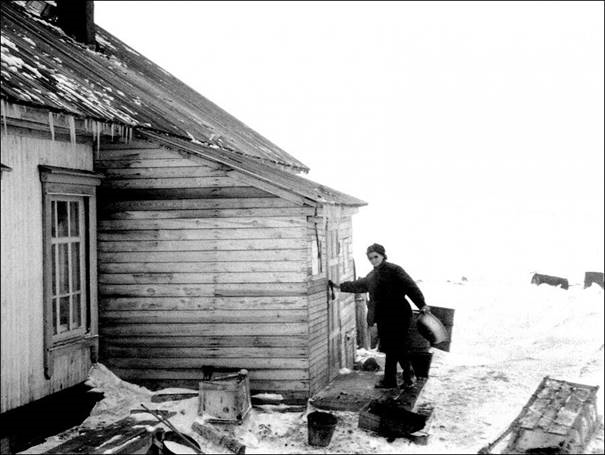
Unfortunately, she did not survive the 90s. Moscow’s efficient managers were not interested in the Arctic, and in 1994 the station was closed. This is what it looked like until recently:
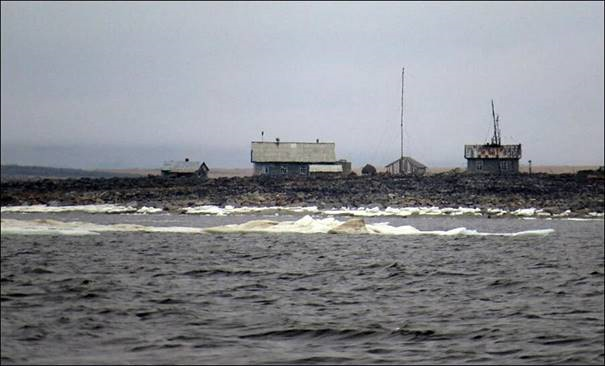
In 2020, a commemorative plaque was installed on the abandoned house of the station to commemorate the following events:
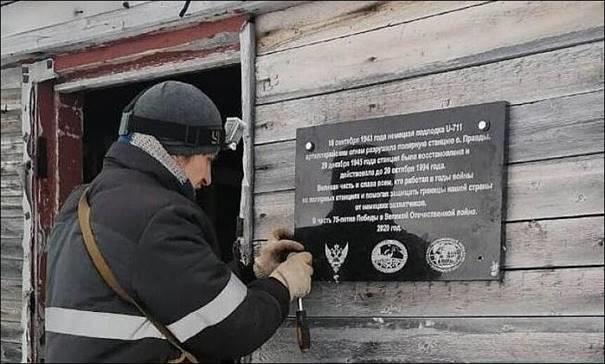
Lange didn’t stop there.
“24.09.43. 04:00. On the way back, I intend to raid the Prosperity radio station on Novaya Zemlya and destroy it. It seems to me that this will not jeopardize the tasks of other boats.
08:15. Radio station Blagopolutschia is visible. Range = 12 nautical miles.
22.08 Dived. We proceeded to the radio station at periscope depth.
09.30 The boat ran aground at the southernmost glacier near Blagogosti, blew out, surfaced 4-5 nautical miles from the station and approached under the cover of a lying iceberg.
10.11 Dived. He continued to move at periscope depth.
The radio station lies in the small connecting language of the peninsula. 1 large house with several chimneys, 2 floors, radio direction finder on the roof. 20 meters north of here there are 2 large radio masts, 4 smaller radio masts, probably a shortwave direction finder. Further to the northwest is a small house.
13:13. Surfaced.
13:15 He opened fire. First target: Radio station. After about 30 hits, it burns out. After that, a smaller house caught fire, and more radio masts were fired.
13:45 After 76 shots of 8.8 cm caliber and 350 rounds of 2 cm caliber, the fire stopped, as the radio station and adjacent buildings were completely destroyed.
13.50 Turned away and with the help of both diesels rounded the peninsula and the distant cliffs of the cape in the West Bay to destroy the meteorological station, which was reported to the Luftwaffe.
16.16 Cautiously walked among the surface rocks and surf. The rest of the houses are near the water, in the western direction of the radio station. There is a large house, 1 smaller house and 1 barn. Three survivors flee to the mountains.
As the range was too great for the use of a rubber boat with troops, the house was shelled by artillery fire. The largest house apparently contained gasoline and burned with a high flame. After 32 rounds of 8.8 cm caliber and 250 rounds of 2 cm caliber, everything was destroyed.
17.00 left on both diesels.”
I found mentions of only two polar explorers of this station – Krymov and Shashkovsky. It is not clear who the third person Lange saw there. From the first shots, they radioed the attack. Three days later, they were taken out by seaplane by the famous polar pilot I.I. Cherevichny. Here he is at the helm, behind him is the famous polar navigator V.I. Akkuratov
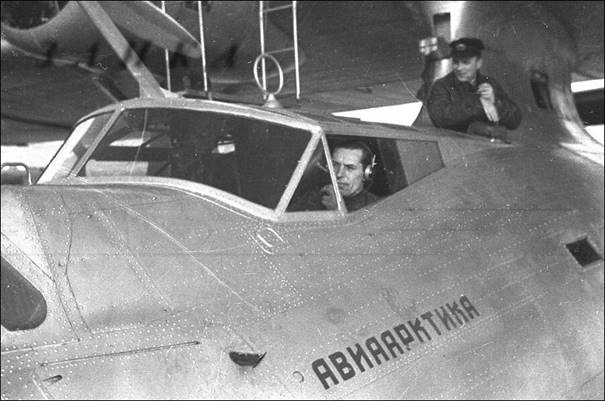
The station was never rebuilt after that. This is what it looks like today:
But Lange’s most epic raid was on the station at Cape Sterlegov.
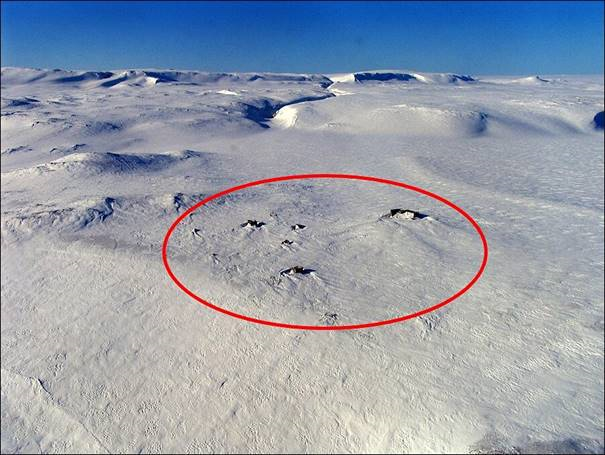
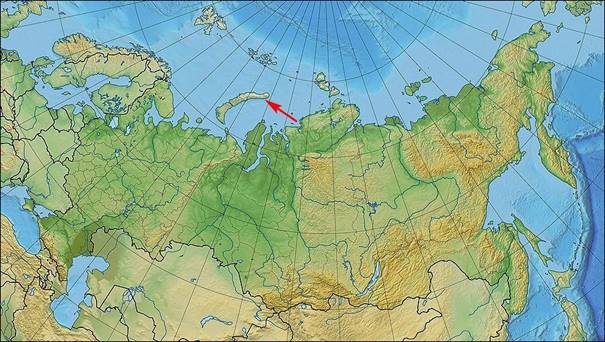
In September 1944, he returned to the scene of his previous year’s adventures, but this time in the company of the submarine U-957. In this case, the protruding ears of our soldiers again played a role. Along with civilian specialists, there was a military post of the Surveillance and Communication Service, consisting of the commander of the post of sergeant major of the 2nd article Valentin Utkin and Red Navy men Nikolai Kondrashov and Nikolai Nogaev, armed with a machine gun, two rifles and a box of grenades. Their task was to warn in time about the appearance of the enemy and, together with meteorologists, retreat to the tundra, capturing cipher books and tables.
The head of the station, A.M. Poblodzinsky, had previously informed the command that the soldiers were beating the ass, treating their duties lightly, but did not get a response.
On that day, the head of the landing strip for seaplanes, Bukhtiyarov, and the Red Navy officer Nogayev carried out a task to search for and neutralize mines thrown on the coast.
The Germans secretly landed to the side of the station and initially captured the SNiS post and two soldiers right in the basement. Apparently, they were still resting from the work of cleaning the weapons, which they did not have enough strength to collect and they lay disassembled on the table. The box with grenades was not opened at all.
The whole epic has been described repeatedly and in great detail. The Germans captured everyone without resistance, except Nogayev and Bukhtirov. The latter, to his misfortune, did not return in time, was also captured, and, being an experienced musher, was involved in transporting the station’s property to the parking place of the boats. However, he managed to choose the moment and rushed on his faithful dogs to the tundra, where, together with Nogayev, he waited for the evacuation in a few days.
In the meantime, the Germans tried to arrange a radio game, but it did not work, as a result, the prisoners were taken to a boat, and the station was burned.
I came across fragments of the survivors’ memories of life aboard the boat and of Lange himself. Radio operator L.E. Ventskovsky said:
“We, the prisoners, were taken, as I learned later, to the submarine U-711. The Germans set fire to the station and then destroyed it with artillery fire. During our stay on the submarine, we were interrogated again (an interpreter with a Latvian radio operator in the presence of officers), and at the same time they took us out on deck and threatened, in the best pirate traditions, to keel (let us pass on a cable under the keel) if we did not give information about the location of the ships, then the interrogations stopped.
We were accommodated on mats on the deck, between the bunks of the sailor’s cabin. Nothing good awaited us, and, nevertheless, the German sailors did not beat us or threaten us. Their mood was rather complacent, because after all they were returning from a successful campaign, and moreover, with booty and without losses. They must have guessed the outcome of the war. It seems that they were fed the same food that the crew ate. They were even allowed on deck to smoke, usually the boat was on the surface.
In the first ten days of October, we were brought to Trondheim (Norway), to the floating base of German submarines. In this city, we were put in the city jail. Later, we were all transferred to Oslo prison, from where we were taken on a transport ship to Poland.”
Venckowski, Poblodzinsky, Utkin and Kondrashov were liberated by Soviet soldiers in 1945. After the war, Ventskovsky and Bukhtiyarov participated in the restoration of the station at Cape Sterlegov.
But it is difficult to judge what Lange wrote, whether he lied out of habit or not:
“We took the Russian prisoners with us, distributing them among the submarines. They were scientists, excellent people. I shared a bed with the leader of this group.”
Well, I don’t know whether to believe it or not.
U-711 was sunk along with the base ship on 4 May 1945, becoming the last submarine to be destroyed by British aircraft during the war. 40 members of her crew, who were on the ship, died with her. The watch, which was on the boat, survived in the amount of 12 people, having managed to leave it before sinking, including Lange.
After serving 3 months in captivity, he subsequently served in the Bundesmarine from 1957 to 1972. He died in 2014 at the age of 97.
